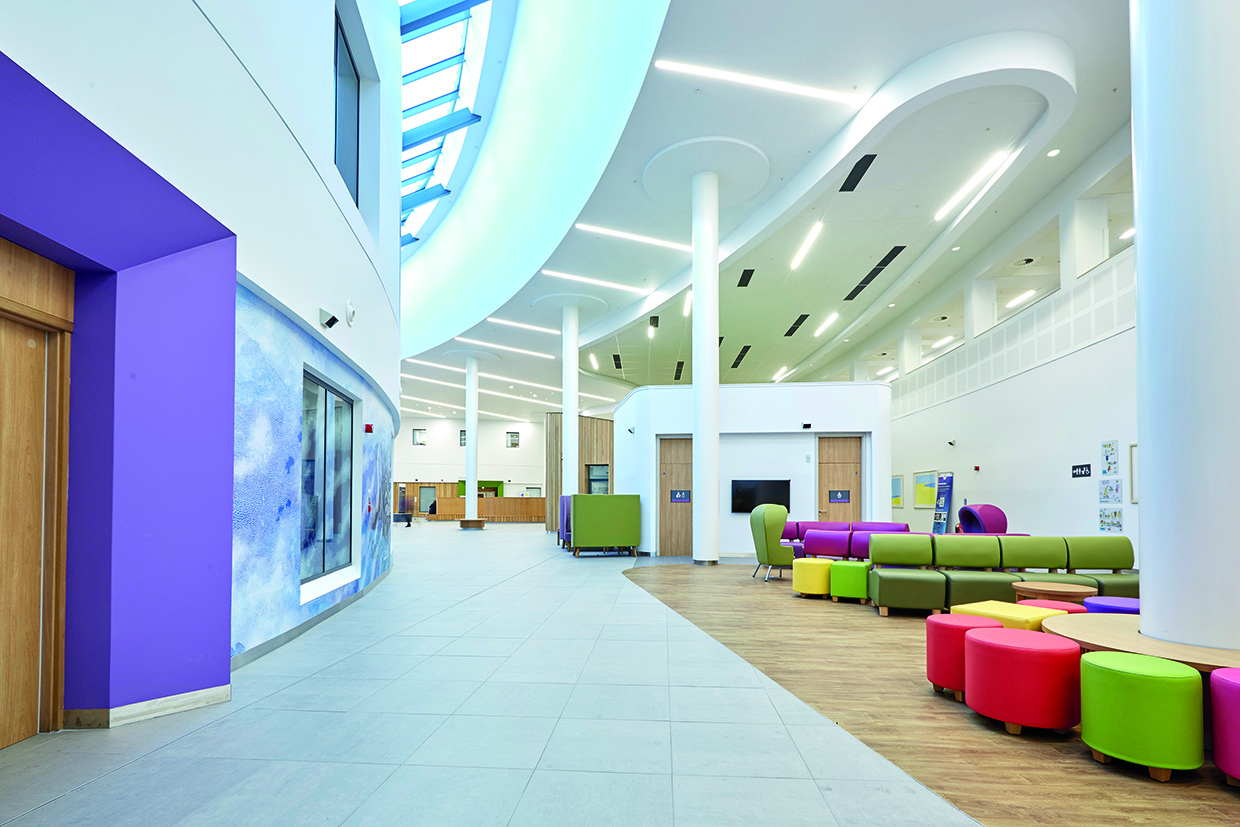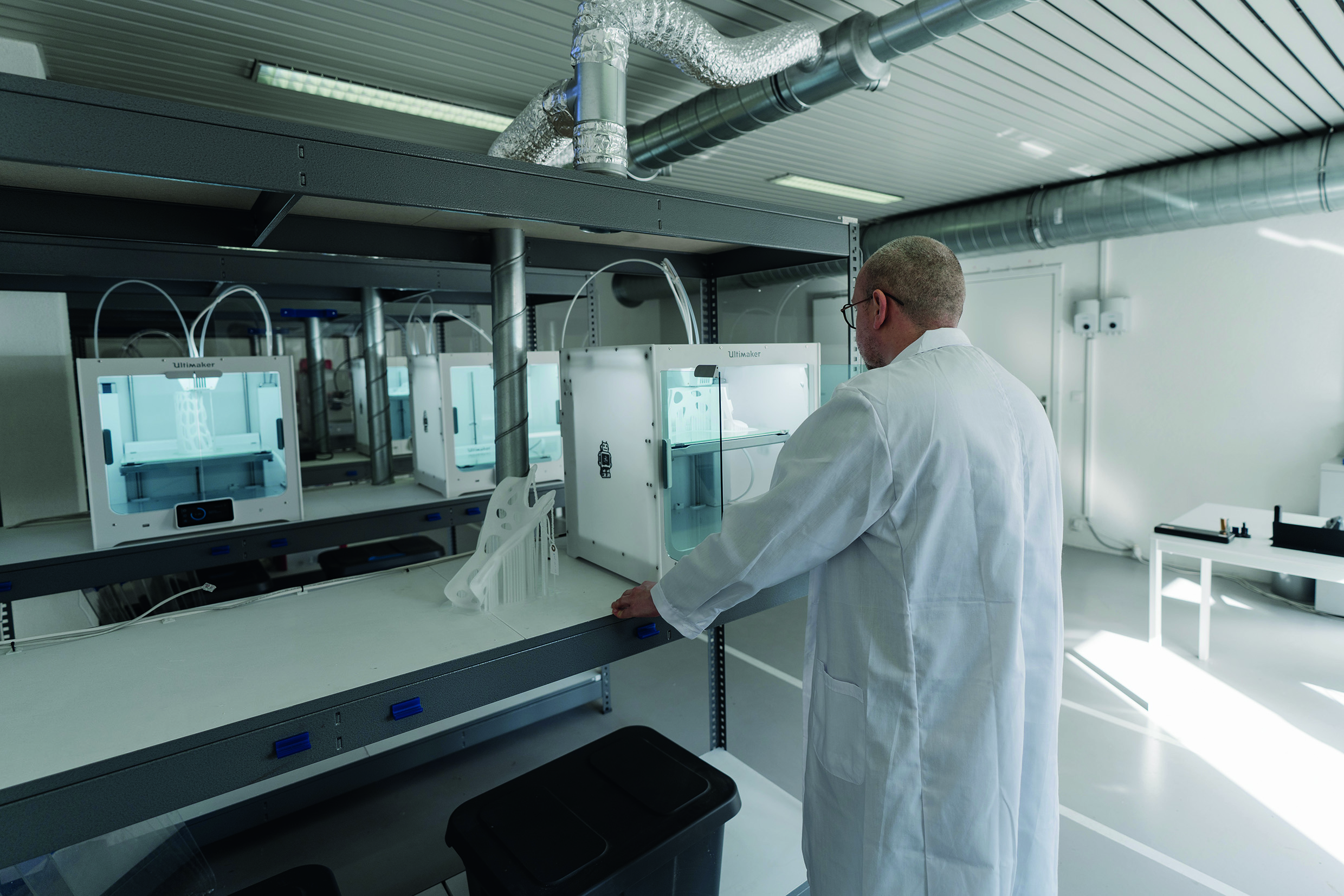
Noise levels in healthcare settings have gradually increased since the 1960s, with many hospitals found to regularly exceed the World Health Organization’s guideline values. Noise is known to hinder communication in spaces where it can be critical to patient wellbeing; impact their ability to rest; and has even been shown to affect outcomes, with a study by AECOM showing that significant numbers of respondents reported sleep loss, reverberation issues, and a lack of privacy during consultations. And this means that demand for noise and vibration monitoring and acoustic technology across healthcare applications and everyday care settings is increasing.
PROMOTING RECOVERY
Kyriakos Papanagiotou, founder and director of KP Acoustics Group, explains: “Those willing to jump on the front foot and prioritise acoustics in healthcare spaces are quickly realising that acoustics can be a transformative tool for the future. “Acoustic solutions will play a key role in futureproofing the advancement of healthcare technologies, ensuring the creation of acoustically-sound environments that work to promote wellbeing and recovery and safeguarding the continued function and maintenance of high-tech medical equipment.” Jeremy Simons, commercial sector systems manager at Saint-Gobain UK and Ireland, adds: “There is now significant published evidence demonstrating the challenges created by poor acoustic design and the benefits to both patients and staff from good acoustic design. “Good acoustic design also increases the morale and comfort of healthcare professionals and is essential for effective communication between patients and staff.”
MAKING THE RIGHT CHOICE
The guidance document, HTM 08-01, provides minimum performance guidelines for designers and says that ‘good acoustic design is fundamental to the quality of healthcare buildings’. And when considering acoustics, the noise sensitivity of any area is dependent on the type and source of the noise and use of the area. “Any healthcare design should include decisions on the layout of the site to optimise acoustic performance and this should be informed by a pre-design noise survey carried out by a competent person,” advises Simons. “Careful choice of products and systems can aid in creating good acoustic environments, without compromising on critical healthcare performances. “Partitions from British Gypsum, for example, can provide acoustic separation with durability and fire performances in a range of widths to suit the application. “And Gyptone Acoustic Ceiling products can help to control reverberation in spaces where clarity is critical. “Saint Gobain Ecophon provides further sound-absorbing solutions for both walls and ceilings in the form of hygienic sound absorbers, designed specifically for use in healthcare settings.”
OPENING DOORS
One of the main sources of noise within hospitals is medical equipment and technology. Papanagiotou said: “Advances in healthcare technology across medical imaging, diagnostics, and equipment maintenance will increase the demand for acoustic solutions and bespoke acoustic identities in healthcare facilities. “With the use of emerging technologies such as artificial intelligence (AI) and Internet of Things (IoT) based predictive maintenance, there is now increased demand to ensure medical products go through meticulous noise and vibration testing, so they are fit for the end user. “And such technological advancements are opening doors for the creation of high-tech solutions for the consistent, automated vibration monitoring of medical equipment. “This will work to prevent malfunctions, predict potential hazards, and identify faults for effective maintenance that will allow continued use of high-tech medical equipment to support patient diagnosis and treatment.
THE POWER TO TRANSFORM
“Equally, as more microscopic medical and operational procedures are developed, such as inverted microscopes used for ICSI and IMSI, vibration control strategies will be critical to ensure operations remain unimpeded by vibrations caused by road traffic or building movement.” He adds: “With the power to transform a myriad of healthcare operations and patient services, the future of healthcare will be characterised by increasing demand for acoustic solutions that improve sound technology, counter the impact of noise and vibration pollution, and enhance the acoustic environment of a variety of healthcare facilities. “Ultimately, acoustic solutions will work hard to improve the technical quality of healthcare facilities, as well as prioritising the health and wellbeing of healthcare professionals and patients they serve.”
DRIVING DESIGN
And this is driving a new generation of products. Simons said: “As our awareness of the criticality of acoustics grows in healthcare settings, building design will become ever more important in the control of noise. “Where building layout cannot solve challenges, acoustic screens, absorbers, and high-performance ceilings will be used to complement designs. “Use of specific product types for different noise sources is also likely to grow. “While the idea of acoustic ‘masking’ is a popular one, control of noise at source or recipient is more effective and often more pleasant for the space user.”
LASTING PERFORMANCE
Offering advice to specifiers, he adds: “When designing, flanking sound must be considered and design details created to avoid it. “Overcompensating for noise, and particularly reverberation time, can be just as bad as undercompensating – a space with very-low reverberation time can feel unpleasant to be in, just as much as a particularly-reverberant space. “Careful use of sound-absorbing products under the guidance of a competent person can dramatically improve the overall feel of a space. “Beyond the design, products must be installed to the detailed design in order to perform correctly. Correct installation of all components, and proper sealing with the correct products, can make all the difference to a lasting performance.”,
